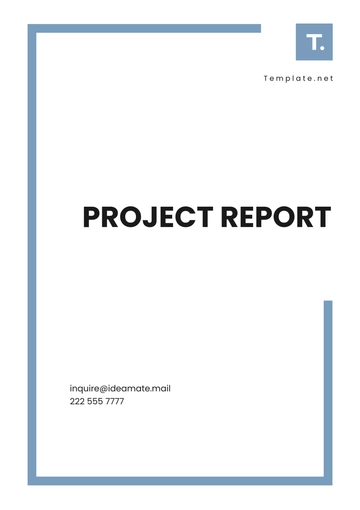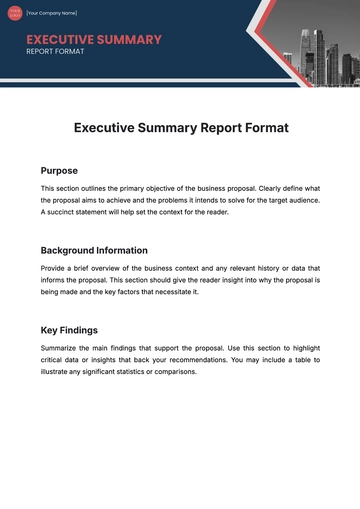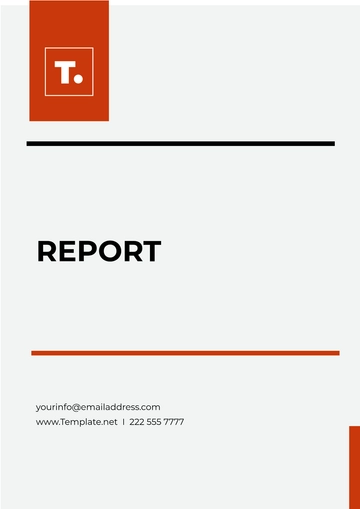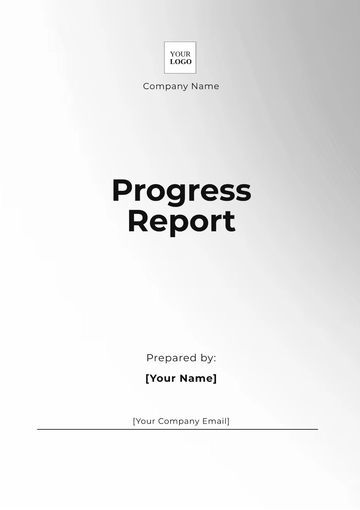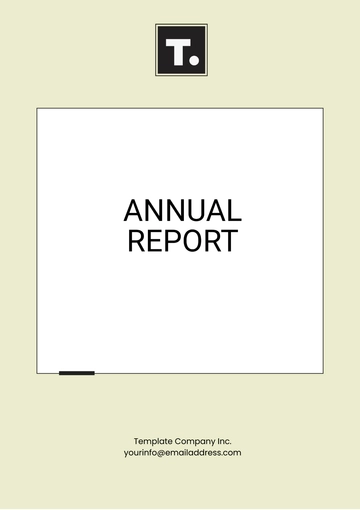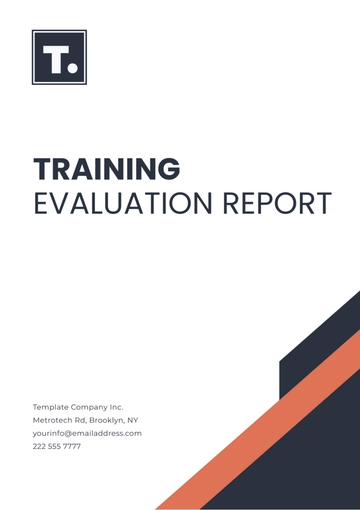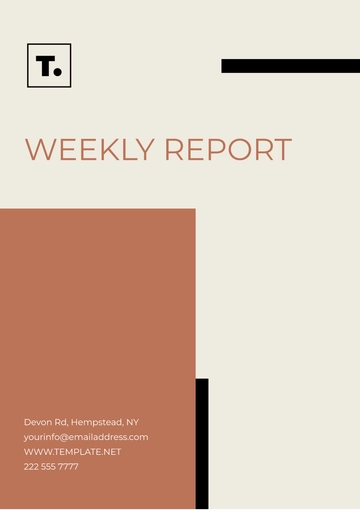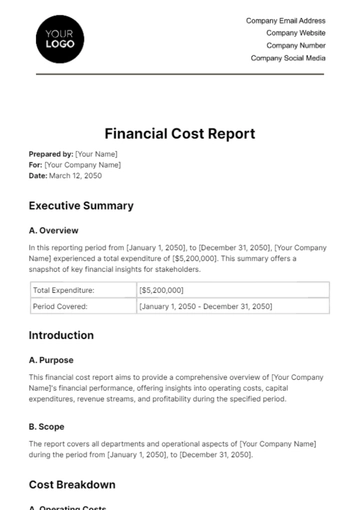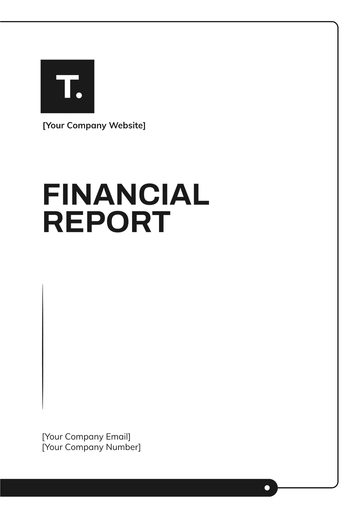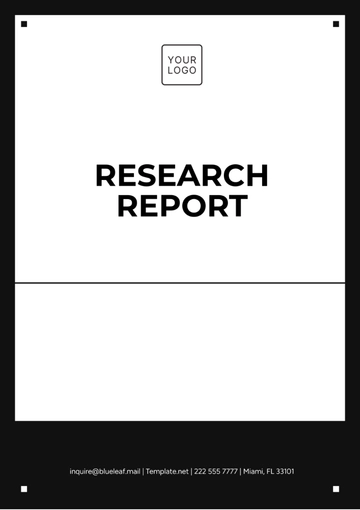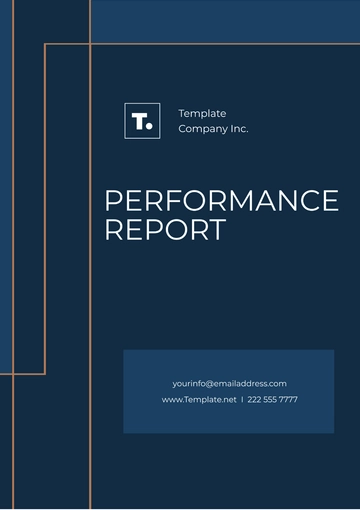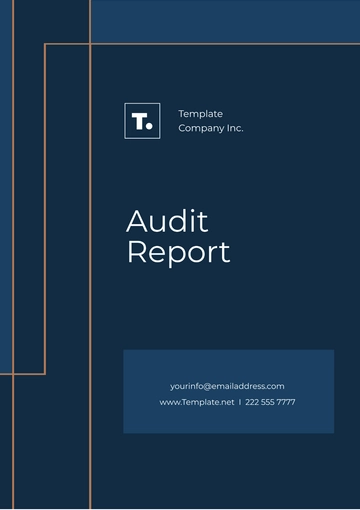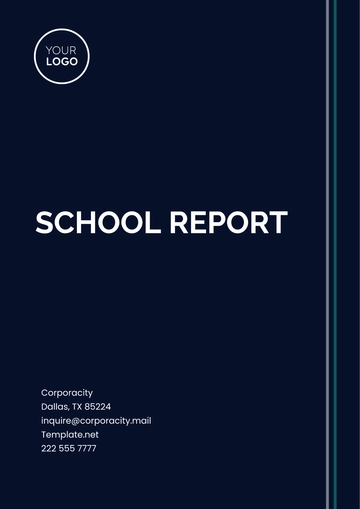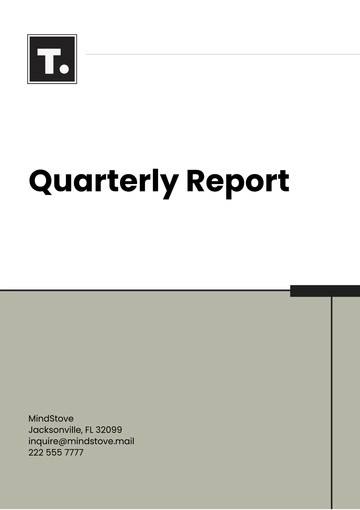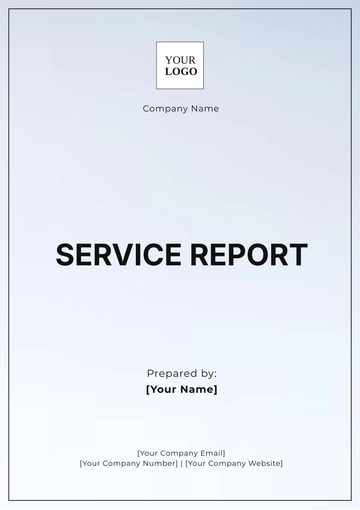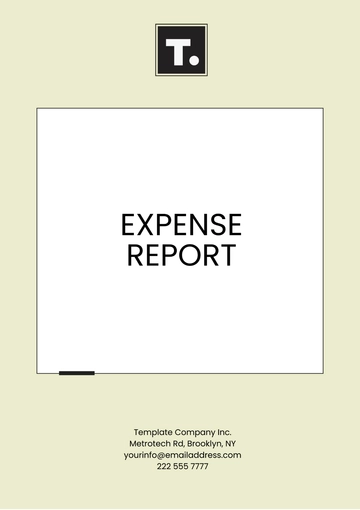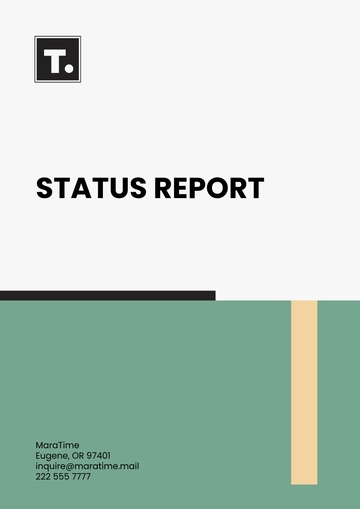Free Restaurant Monthly Sales Report
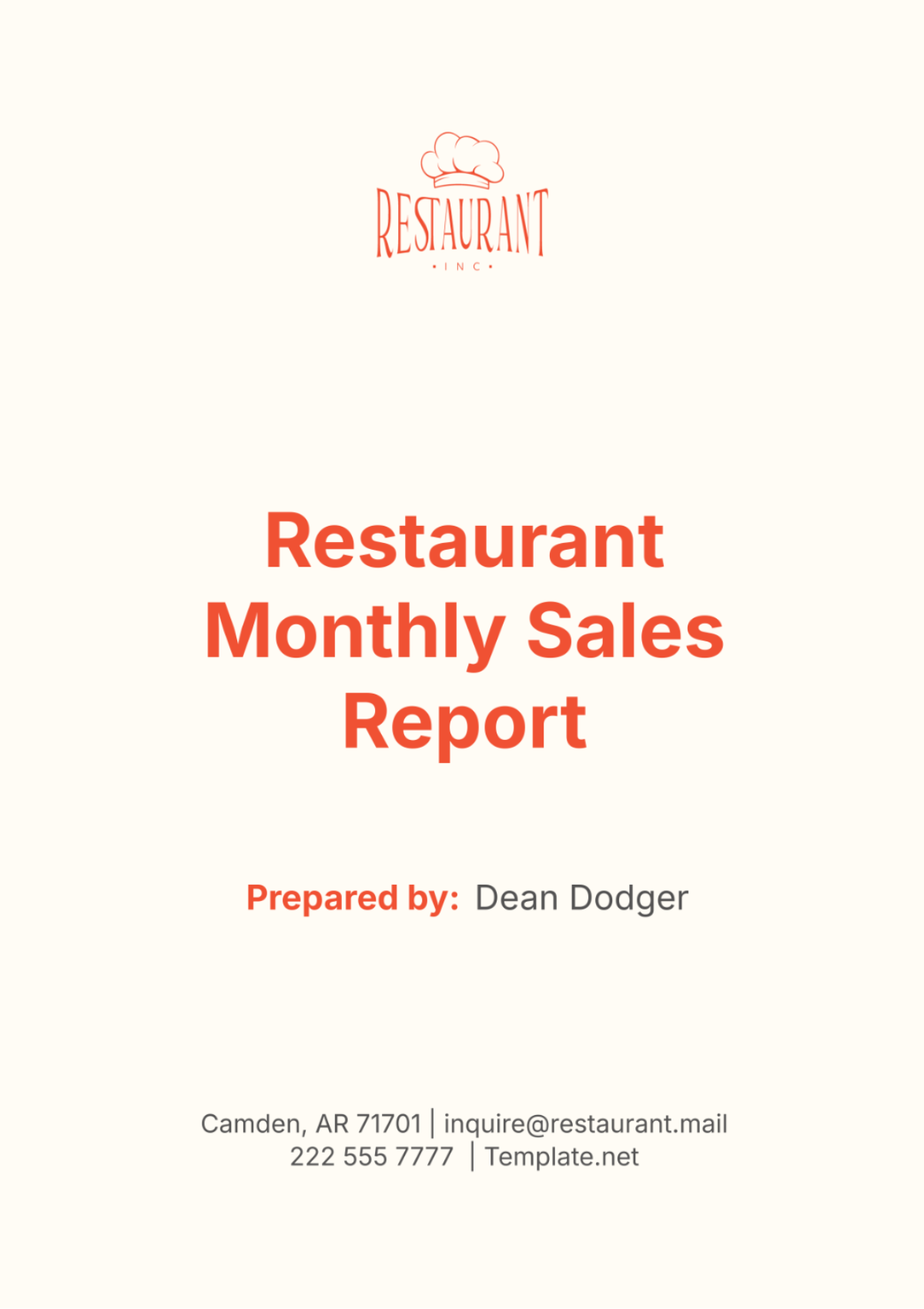
I. Executive Summary
A. Overview
In the month of [Month, Year], [Your Company Name] experienced a steady performance with noticeable trends in customer preferences and sales growth. This report provides a detailed analysis of the sales metrics, financial performance, and strategic recommendations.
B. Key Highlights
Total Sales: $[200,000]
Monthly Sales Growth: [5]%
Best-selling Menu Item: Grilled Salmon
Peak Sales Day: [May 14, 2050]
Average Customer Spend: $[35]
II. Sales Analysis
A. Total Sales
Analyzing the daily sales data reveals a consistent performance throughout the month, with fluctuations corresponding to peak and off-peak periods. Understanding these trends is crucial for optimizing staffing levels and inventory management. By closely monitoring sales patterns, [Your Company Name] can capitalize on opportunities to maximize revenue and minimize costs.
Date | Sales Amount ($) |
|---|---|
[May 1, 2050] | [6,000] |
[May 2, 2050] | [7,500] |
[May 3, 2050] | [6,800] |
[May 4, 2050] | [7,200] |
[May 5, 2050] | [8,000] |
[May 6, 2050] | [7,900] |
[May 7, 2050] | [7,500] |
[May 8, 2050] | [7,800] |
[May 9, 2050] | [8,200] |
[May 10, 2050] | [8,400] |
B. Sales by Category
Breaking down sales by category provides valuable insights into customer preferences and product demand. Main courses consistently contribute the majority of revenue, followed by appetizers, desserts, and beverages. This information can inform menu planning and marketing strategies, allowing [Your Company Name] to tailor offerings to meet customer expectations and drive profitability.
Category | Sales Amount ($) | Percentage (%) |
|---|---|---|
Appetizers | [30,000] | [15] |
Main Courses | [100,000] | [50] |
Desserts | [40,000] | [20] |
Beverages | [30,000] | [15] |
C. Best-Selling Items
Identifying the best-selling items allows [Your Company Name] to capitalize on popular menu choices and optimize inventory management. Grilled Salmon emerges as the top-selling dish, followed closely by Beef Steak, Caesar Salad, Chocolate Cake, and Red Wine. By leveraging data-driven insights, the restaurant can strategically promote these high-margin items to enhance overall sales performance.
Item | Quantity Sold | Sales Amount ($) |
|---|---|---|
Grilled Salmon | [500] | [15,000] |
Beef Steak | [450] | [13,500] |
Caesar Salad | [600] | [9,000] |
Chocolate Cake | [700] | [10,500] |
Red Wine | [800] | [12,000] |
III. Financial Performance
A. Revenue Breakdown
Examining the sources of revenue reveals the contribution of dine-in, takeaway, and delivery services to overall sales. While dine-in remains the primary revenue driver, takeaway and delivery services have shown promising growth potential.
Source of Revenue | Amount ($) |
|---|---|
Dine-In | [120,000] |
Takeaway | [50,000] |
Delivery | [30,000] |
B. Monthly Sales Growth
Comparing current month sales with the previous month allows [Your Company Name] to track performance trends and assess growth trajectory. May 2050 witnessed a [5]% increase in sales compared to April 2050, indicating positive momentum and market resilience. By identifying underlying factors driving sales growth, the restaurant can implement targeted strategies to sustain momentum and achieve long-term success.
Previous Month Sales (April, 2050): $[190,000]
Current Month Sales (May, 2050): $[200,000]
Growth Rate: [5]%
C. Average Customer Spend
Analyzing average customer spend by day of the week provides insights into consumer behavior and spending patterns. While spending tends to peak on weekends, [Your Company Name] observes consistent spending patterns throughout the week.
Day of the Week | Average Spend ($) |
|---|---|
Monday | [30] |
Tuesday | [32] |
Wednesday | [34] |
Thursday | [35] |
Friday | [38] |
Saturday | [40] |
Sunday | [36] |
IV. Customer Analysis
A. Customer Demographics
Understanding the demographics of [Your Company Name]'s customer base is essential for targeted marketing and personalized experiences. The majority of patrons fall within the 25-44 age range, with a slightly higher representation among younger demographics. By tailoring marketing messages and menu offerings to resonate with these demographics, the restaurant can cultivate strong customer relationships and foster brand loyalty.
Demographic | Percentage (%) |
|---|---|
Age 18-24 | [15] |
Age 25-34 | [30] |
Age 35-44 | [25] |
Age 45-54 | [20] |
Age 55+ | [10] |
B. Customer Feedback
Monitoring customer feedback provides valuable insights into service quality, menu offerings, and overall dining experience. With [85]% positive reviews, [10]% negative reviews, and [5]% neutral reviews, [Your Company Name] demonstrates a commitment to excellence while acknowledging areas for improvement.
Positive Reviews: [85]%
Negative Reviews: [10]%
Neutral Reviews: [5]%
V. Operational Performance
A. Staff Performance
Assessing staff performance metrics such as average service time, customer satisfaction rate, and employee attendance rate is crucial for maintaining operational excellence. By prioritizing training and development initiatives, [Your Company Name] can empower staff to deliver exceptional service and foster a culture of continuous improvement.
Metric | Value |
|---|---|
Average Service Time (minutes) | [25] |
Customer Satisfaction Rate (%) | [90] |
Employee Attendance Rate (%) | [95] |
B. Inventory Management
Effective inventory management is essential for ensuring product availability, minimizing waste, and controlling costs. By closely monitoring inventory levels and consumption rates, [Your Company Name] can optimize ordering processes and prevent stock outs or overstock situations.
Item | Beginning Inventory | Ending Inventory | Usage |
|---|---|---|---|
Salmon | [1000 lbs] | [500 lbs] | [500 lbs] |
Beef | [800 lbs] | [400 lbs] | [400 lbs] |
Lettuce | [300 heads] | [150 heads] | [150 heads] |
Chocolate | [200 lbs] | [100 lbs] | [100 lbs] |
VI. Strategic Recommendations
A. Menu Optimization
Continuously refreshing and refining the menu allows [Your Company Name] to stay ahead of evolving consumer preferences and industry trends. Introducing seasonal dishes, rotating specials, and incorporating customer favorites ensures a diverse and appealing selection for patrons. By regularly reviewing menu performance and soliciting customer feedback, the restaurant can identify opportunities for innovation and differentiation to maintain a competitive edge.
B. Marketing Strategies
Expanding reach and engagement through targeted marketing initiatives is essential for driving customer acquisition and retention. Leveraging social media platforms, email marketing campaigns, and digital advertising channels enables [Your Company Name] to connect with a broader audience and amplify brand messaging. Implementing a loyalty program incentivizes repeat business and fosters long-term customer loyalty, contributing to sustainable growth and profitability.
C. Operational Improvements
Streamlining operations and enhancing efficiency across all facets of the business optimizes resource allocation and drives bottom-line results. Investing in staff training and development programs enhances service quality and employee morale, ultimately enhancing the overall customer experience. Improving inventory management systems and processes reduces waste, minimizes stockouts, and ensures consistent product availability, fostering operational resilience and financial sustainability.
VII. Conclusion
The month of [May, 2050] showcased [Your Company Name]'s resilience and commitment to excellence amidst evolving market dynamics. By leveraging data-driven insights and implementing strategic initiatives, the restaurant can sustain momentum and drive continued growth in the months ahead. With a focus on innovation, customer satisfaction, and operational excellence, [Your Company Name] is well-positioned to achieve its long-term objectives and remain a leading player in the competitive restaurant industry.
- 100% Customizable, free editor
- Access 1 Million+ Templates, photo’s & graphics
- Download or share as a template
- Click and replace photos, graphics, text, backgrounds
- Resize, crop, AI write & more
- Access advanced editor
Monitor performance with Template.net's Restaurant Monthly Sales Report Template. This customizable document provides a structured format for reporting monthly sales data, including revenue, expenses, and profitability. Identify trends and make informed decisions. Editable in our Ai Editor Tool for seamless customization to match your restaurant's reporting requirements and business insights.
You may also like
- Sales Report
- Daily Report
- Project Report
- Business Report
- Weekly Report
- Incident Report
- Annual Report
- Report Layout
- Report Design
- Progress Report
- Marketing Report
- Company Report
- Monthly Report
- Audit Report
- Status Report
- School Report
- Reports Hr
- Management Report
- Project Status Report
- Handover Report
- Health And Safety Report
- Restaurant Report
- Construction Report
- Research Report
- Evaluation Report
- Investigation Report
- Employee Report
- Advertising Report
- Weekly Status Report
- Project Management Report
- Finance Report
- Service Report
- Technical Report
- Meeting Report
- Quarterly Report
- Inspection Report
- Medical Report
- Test Report
- Summary Report
- Inventory Report
- Valuation Report
- Operations Report
- Payroll Report
- Training Report
- Job Report
- Case Report
- Performance Report
- Board Report
- Internal Audit Report
- Student Report
- Monthly Management Report
- Small Business Report
- Accident Report
- Call Center Report
- Activity Report
- IT and Software Report
- Internship Report
- Visit Report
- Product Report
- Book Report
- Property Report
- Recruitment Report
- University Report
- Event Report
- SEO Report
- Conference Report
- Narrative Report
- Nursing Home Report
- Preschool Report
- Call Report
- Customer Report
- Employee Incident Report
- Accomplishment Report
- Social Media Report
- Work From Home Report
- Security Report
- Damage Report
- Quality Report
- Internal Report
- Nurse Report
- Real Estate Report
- Hotel Report
- Equipment Report
- Credit Report
- Field Report
- Non Profit Report
- Maintenance Report
- News Report
- Survey Report
- Executive Report
- Law Firm Report
- Advertising Agency Report
- Interior Design Report
- Travel Agency Report
- Stock Report
- Salon Report
- Bug Report
- Workplace Report
- Action Report
- Investor Report
- Cleaning Services Report
- Consulting Report
- Freelancer Report
- Site Visit Report
- Trip Report
- Classroom Observation Report
- Vehicle Report
- Final Report
- Software Report


